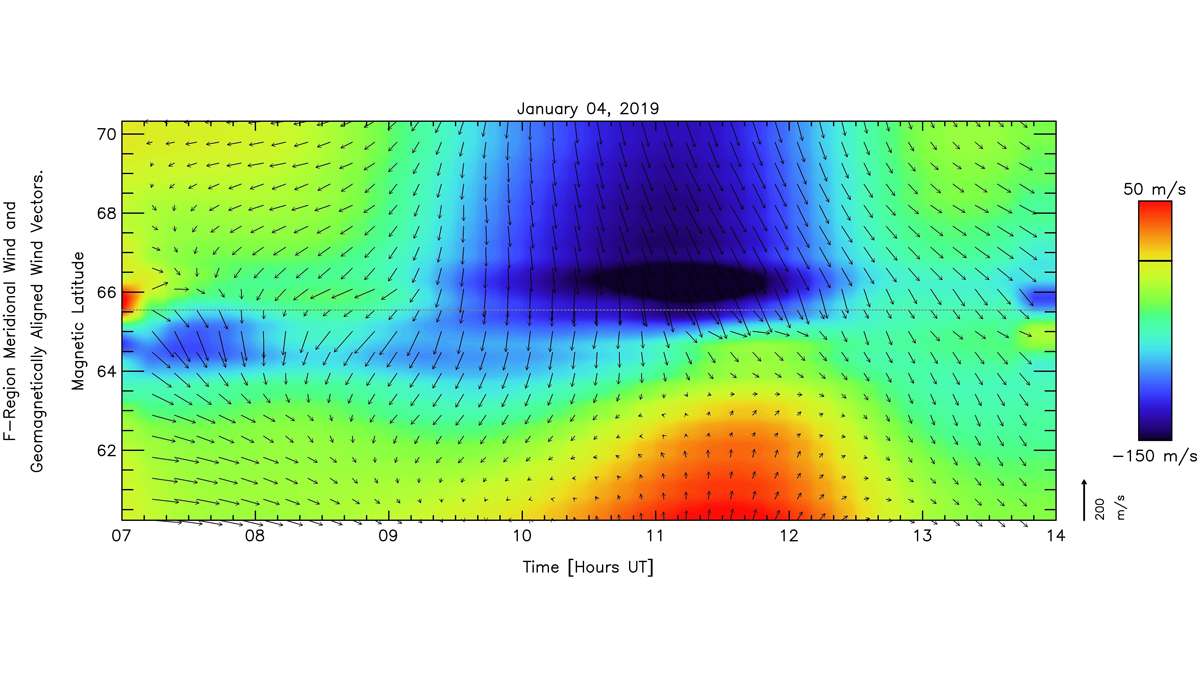Editors’ Highlights are summaries of recent papers by AGU’s journal editors.
Source: Journal of Geophysical Research: Space Physics
In the polar cap region, collisions between the large antisunward flow of ions and neutral particles drives a strong wind from the dayside to the nightside, particularly near the midnight sector. Until now the current belief was that, emerging from the polar cap, this neutral wind would penetrate to sub-auroral latitudes well equatorward of Poker Flat, Alaska at about 65 degrees North. However, ground-based observations by Itani and Conde [2021] of the winds near 240 kilometers in altitude over Alaska have revealed that occasionally the winds behave very differently.
The winds can stall quite abruptly over short distances of 100 to 200 kilometers, long before reaching sub-auroral latitudes. Occurrences of this infrequent phenomenon appear to be favored during mid-winter, and at times of low solar activity and low to moderate geomagnetic activity and is probably the result of the reduced pressure gradients associated with weaker dayside solar heating and the reduced forcing of the winds through collisions with ions when the ion densities are lower.
Simulations conducted with the Thermosphere Ionosphere Electrodynamics General Circulation Model, with approximately 280-kilometer grid point separations, were unable to reproduce the wind stalling pattern.
This observation of unexpected dynamics on small spatial scales is an important result for both the observational and modeling communities with the potential to motivate modeling studies to try to understand this interesting phenomenon.
Citation: Itani, R., & Conde, M. [2021]. Characterizing unexpectedly localized slowing of the thermospheric cross-polar jet of neutral wind over Alaska in the midnight sector. Journal of Geophysical Research: Space Physics, 126, e2020JA028916. https://doi.org/10.1029/2020JA028916

